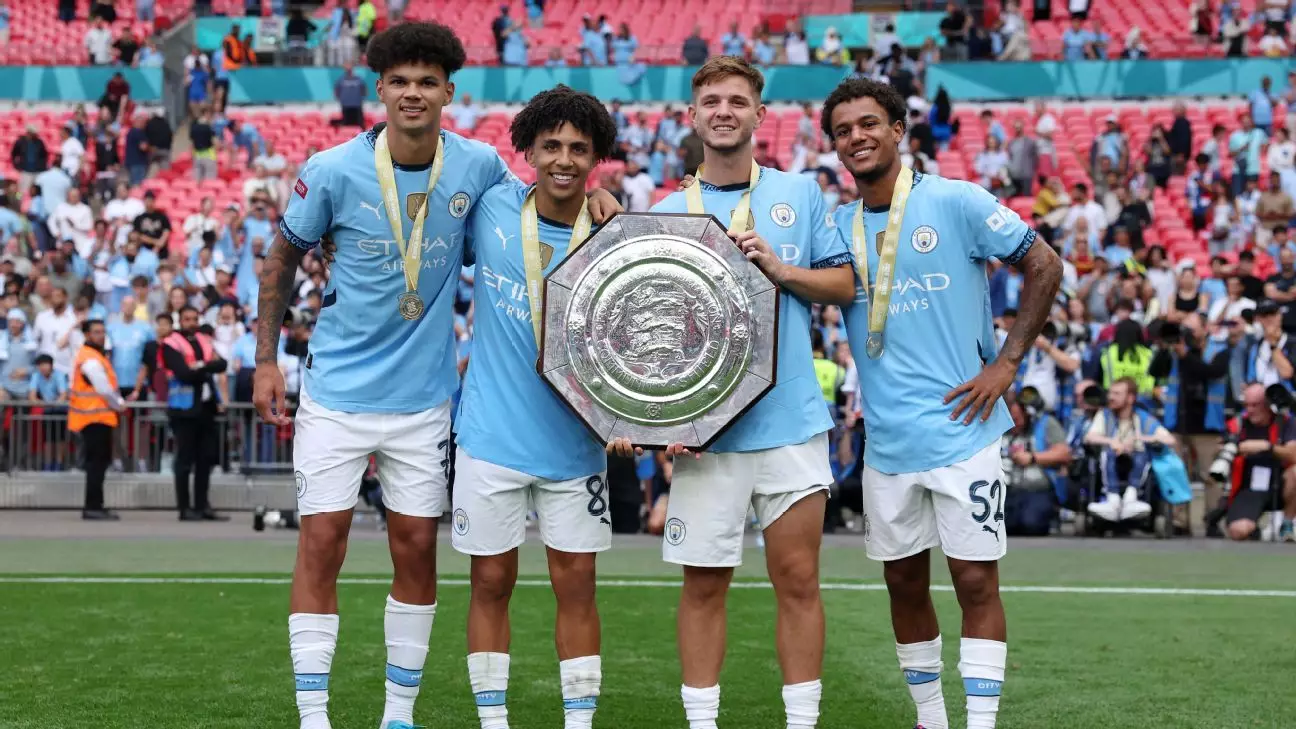Manchester City has undergone a remarkable transformation since the Abu Dhabi takeover in 2008. The transition elevated the club from a mid-tier side in the Premier League to a dominant force in European football. However, the journey for young aspirants dreaming of playing for City started differently. Today, the youth academy under the direction of Thomas Krucken symbolizes both the historical struggles and current triumphs associated with developing top-tier footballers.
Before the advent of state-of-the-art training facilities at the City Football Academy, the youth players of Manchester City had far less to work with. The academy’s former director, Jim Cassell, would encourage innovation, even if it meant resourcefulness. Take, for instance, Krucken’s creative approach to training sessions. He reminisced about using cage sticks from a local pet shop to build a coordination ladder for training young talents like Shaun Wright-Phillips and Kasper Schmeichel. This anecdote illuminates not just the ingenuity required in those earlier days but underscores the stark contrast in support and resources for today’s young footballers.
Fast forward to the current era, and the youth academy is a well-oiled machine, boasting impressive facilities and strategic partnerships. The collaboration with local private schools, such as St. Bede’s College, ensures that young talents are not only nurtured on the football pitch but are also provided with quality educational opportunities. With annual tuition fees upwards of £14,000, such affiliations highlight the elevation of standards at City’s youth levels.
The question remains: can Manchester City successfully transition young players from the academy to the first team? Notable successes such as Phil Foden — the reigning Player of the Year in English football — offer an affirmative response. City has structured its approach to youth development around integrating academy graduates into the senior squad seamlessly. A recent preseason match illustrated this, with nine academy graduates involved against Celtic. The focus is on nurturing talent through a well-defined philosophy instilling City-specific playing styles from a young age.
Pep Guardiola, the club’s manager, has committed to fostering these academy talents, frequently including them in first-team scenarios. Players like Rico Lewis and James McAtee have recently filled critical roles, showcasing a depth of homegrown talent that complements the star-studded mainstay roster. Guardiola’s approach reflects a keen understanding of how to harness youth potential and transpose it into match-day effectiveness.
Krucken emphasizes the philosophy of “creating players of the future.” The seek to equip young footballers with the skills that will be required in a rapidly evolving game is essential. As the speed and tactics in professional football continue to transform, so must the training regimens and developmental focuses of the academy. Krucken is determined to ensure that those who enter the system at a young age are prepared for what will be expected of them in a decade, anticipating trends in both player roles and game dynamics.
This forward-thinking mentality demonstrates a commitment not only to current success but the sustainability of future talent. The challenge lies not just in the immediate training of under-10 players but molding them into the fit, versatile soccer players who will navigate the complexities of top-level football.
While the ultimate aim is to produce players for City’s first team, not every academy graduate will make the cut. However, the club has adeptly capitalized on its developmental success by facilitating lucrative transfers for those who do not fit into Guardiola’s plans. Over the past five years, the financial returns from academy graduates have been staggering, amounting to £276 million. This includes high-profile moves such as Cole Palmer to Chelsea for £42.5 million and Taylor Harwood-Bellis to Southampton for £20 million.
This financial strategy symbolizes a significant evolution in how football clubs operate, allowing City to remain competitive in the transfer market without infringing upon profit regulations imposed by the Premier League. As Guardiola notes, many players have successfully emerged from the academy, paving the way for others to follow suit.
Looking forward, the academy’s role in Manchester City’s footballing identity is more crucial than ever. With an increasing expectation to compete at the highest levels, the integration of youth talent has never been more pertinent. The upcoming matches, such as the Carabao Cup tie against Tottenham, offer perfect opportunities for emerging players to showcase their skills and contribute to the club’s aspirations.
The trajectory of Manchester City’s youth academy encapsulates a narrative of resilience, innovation, and successful adaptation. It stands as an exemplary model for balancing immediate team needs with future prospects in a sport that is always evolving, making Manchester City a key player both on and off the field.

